No Love for Leather: Nike's Innovative Vapor 360 Baseball Glove is Here

You can spend your time smelling leather somewhere else, as Nike has moved away from all leather for its latest baseball glove.
The Nike Vapor 360 glove uses a mix of synthetic materials and engineered leather to create a lightweight alternative to an all-leather glove, also eliminating the two or three months needed to break a glove in.
The Vapor 360 is ready out of the box.
Jeremy Hewitt, a Nike senior designer, tells Edge that when Colorado Rockies All-Star outfielder Carlos Gonzalez showed him how he took a traditional all-leather Nike glove and replaced the back with mesh to make it lighter, Hewitt knew “we could do more to make it game ready than just putting mesh on the back of leather.”
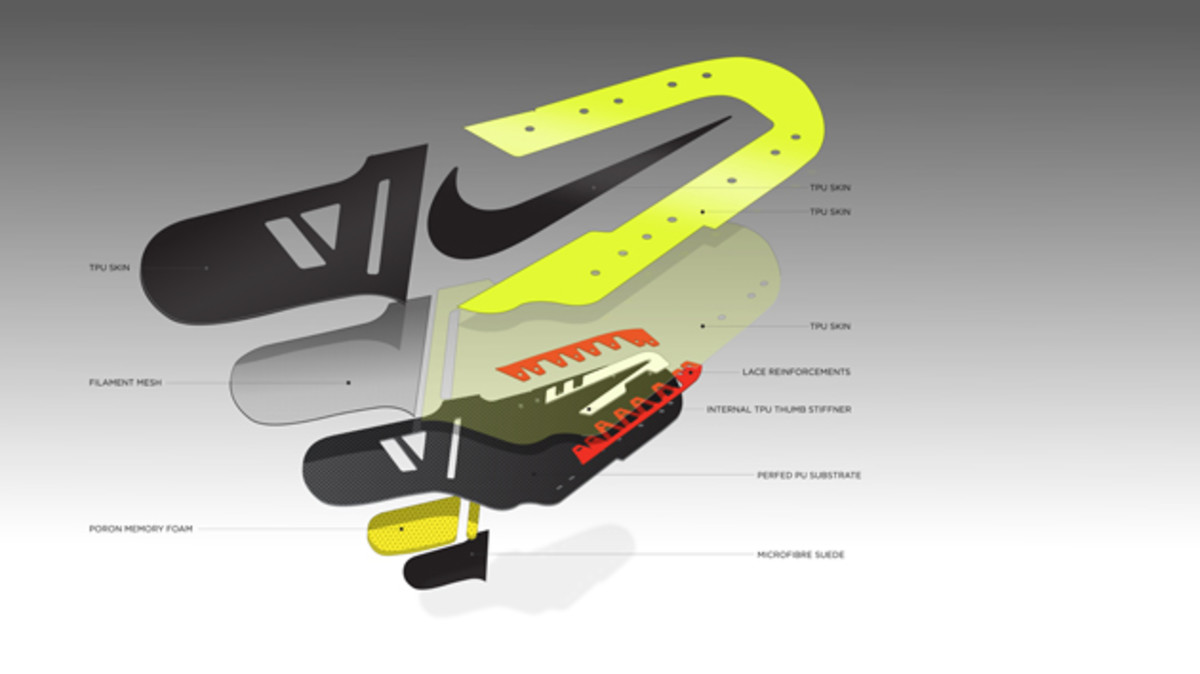
That was two years ago. Now, multiple prototypes later, including one that Gonzalez used to nab a Gold Glove last season, Nike — working with Gonzalez — has created the Vapor 360. The new glove will be used by a handful of Nike MLB athletes and will be available for retail this coming holiday season.
To reduce weight, Nike cut leather. Matthew Hudson, senior designer, tells Edge that he used Hyperfuse construction, a concept borrowed from Nike basketball shoes, to “essentially build a lightweight structure.”
The Hyperfuse combines a lightweight polyurethane material, perforated for even less weight, with a thin layer of thermoplastic polyurethane to get a glove that weighs approximately 585 grams, 20 percent lighter than an all-leather glove.
Nike Launches Flyknit Football Cleats with Dynamic Carbon Plate
“Through heat it welds itself to the base material and creates a very durable, strong and light composite,” Hudson says.
The Hyperfuse moves to the back of the hand and the thumb and pinky. Don’t fret, though; leather doesn’t fully escape the process. Still moldable and durable, leather—engineered, though, with perforations to break down the structure and let it form quickly—covers the palm.
“It is a balance between traditional and futuristic materials, but they function the way athletes want them to work,” Hudson says.
Hewitt says that the glove’s designers also wanted to give the athlete customization, whether a deep bowl a la Ken Griffey Jr. or a flaring thumb and pinky as we see popular currently. Traditionally the thumb and pinky areas have a felt and plastic insert, but Nike included a new insert that players can shape. Then, to hold it in place, Nike replaced the glove’s traditional lacing system with struts from the thumb to pinky. If you want an inward curve, wrench down the laces at the top and keep the lower laces loose. For flare, tighten the middle and loosen the top.
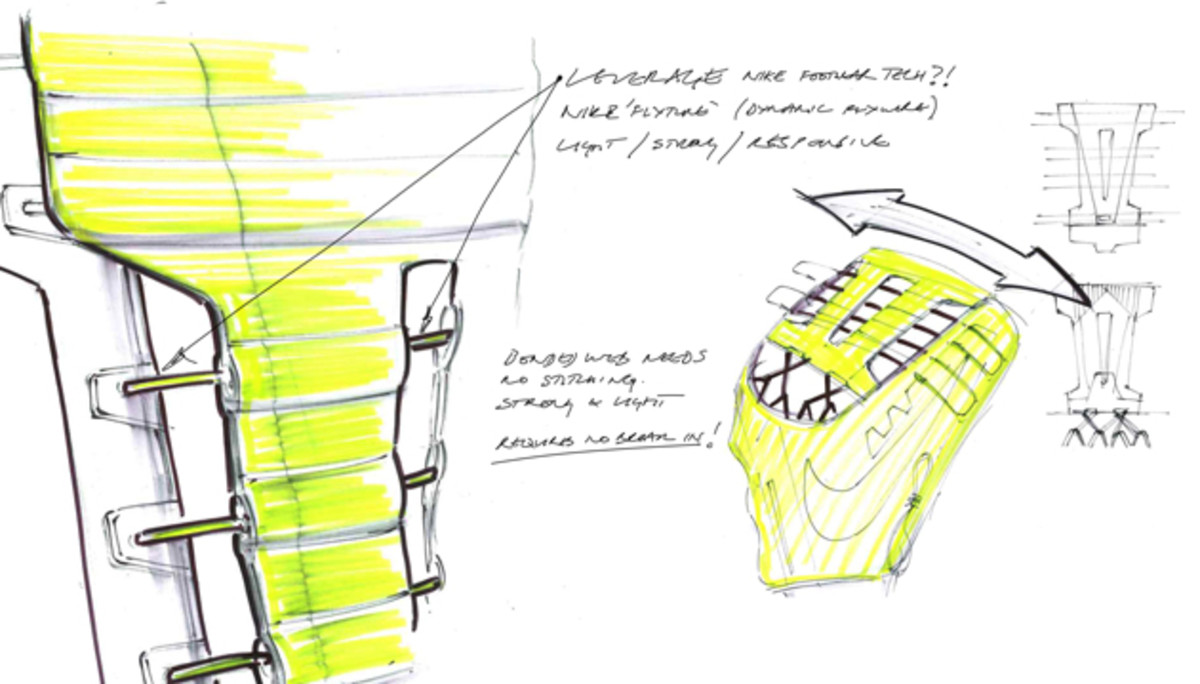
Flywire, the Teflon-like material found in numerous Nike shoes and in the neckline of NFL uniforms, replaces a “predominent amount” of traditional leather lacing. “Flywire is equally as strong, but a big savings in terms of weight,” Hewitt says. Leather laces are still used in the base of the web and glove and across the top of the index, middle and ring fingers.
The combination of Hyperfuse and engineered leather makes the glove game-ready out of the box, Hewitt says. In 2013, Nike sent Gonzalez a Vapor 360 prototype that the Rockies outfielder opened 50 minutes before Opening Day. He played with it that night and won a Gold Glove that season. Who needs that full-leather smell?
Tim Newcomb covers stadiums, design and gear for Sports Illustrated. Follow him on Twitter at @tdnewcomb.
Nike Vapor Baseball Glove
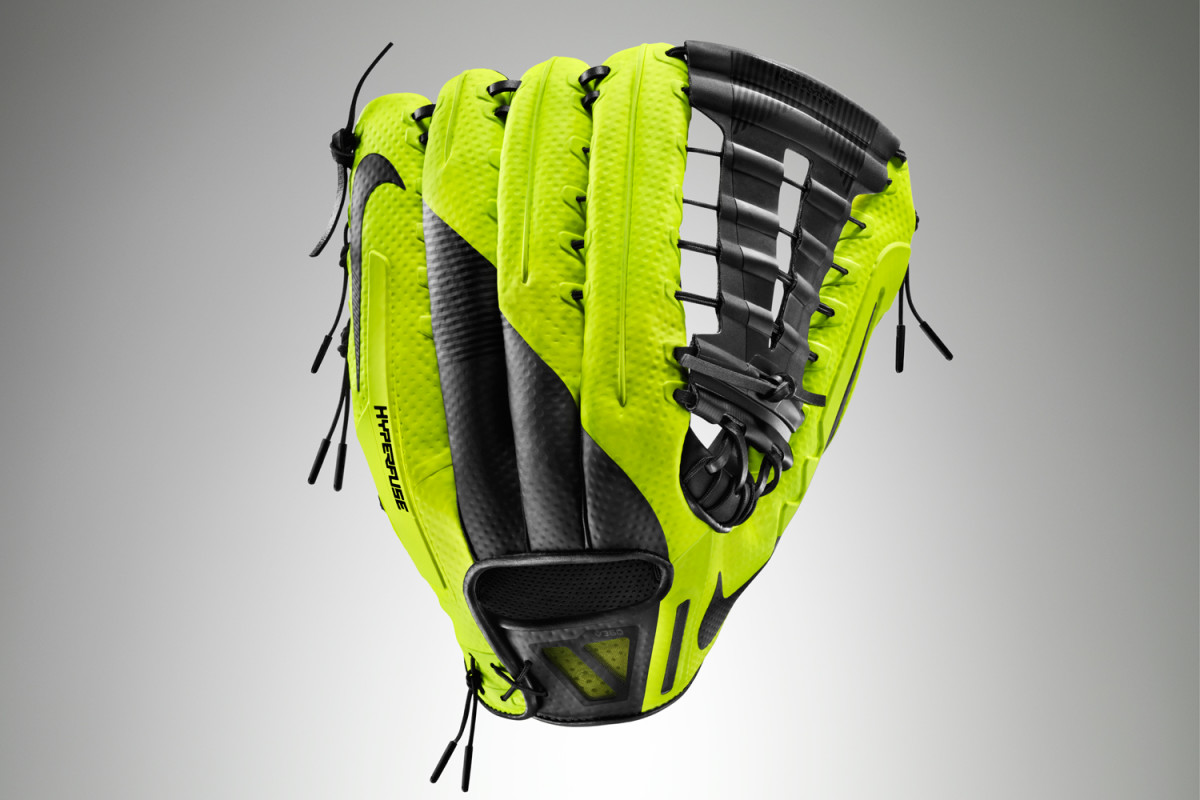
Introducing the Nike Vapor 360 (Photos courtesy of Nike)
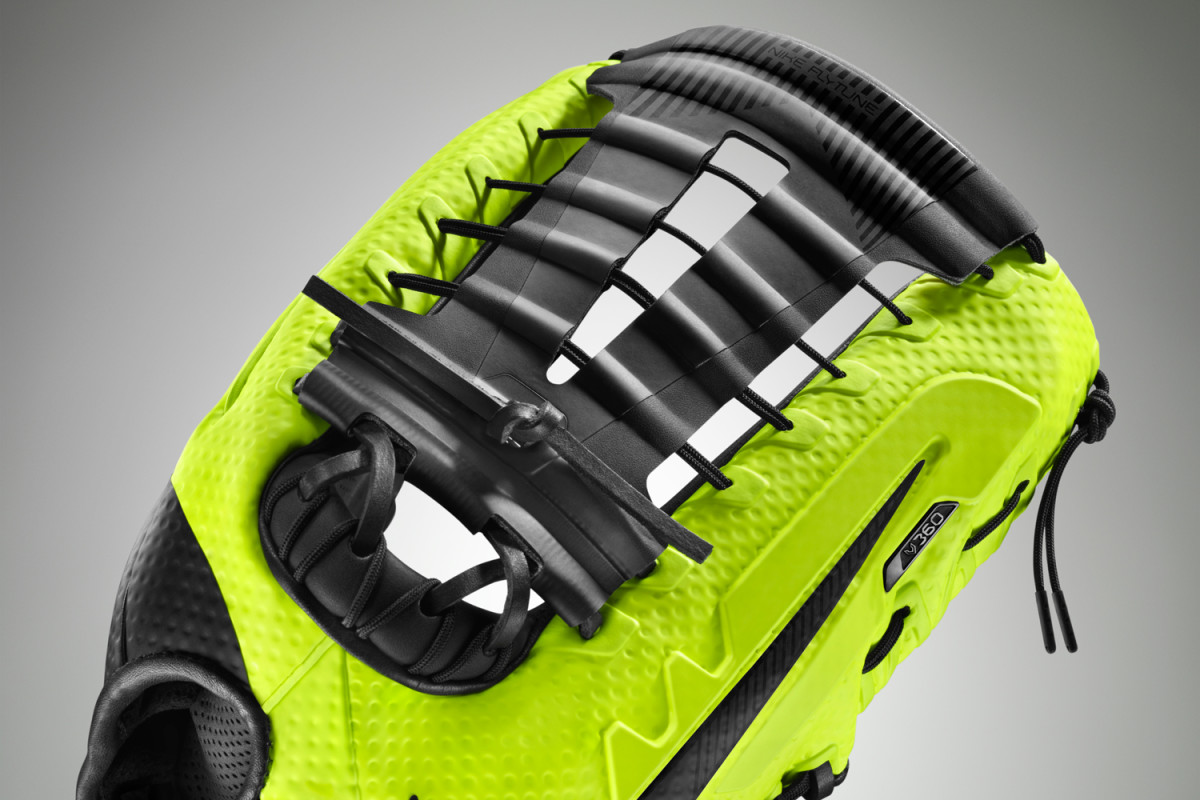
Introducing the Nike Vapor 360 (Photos courtesy of Nike)
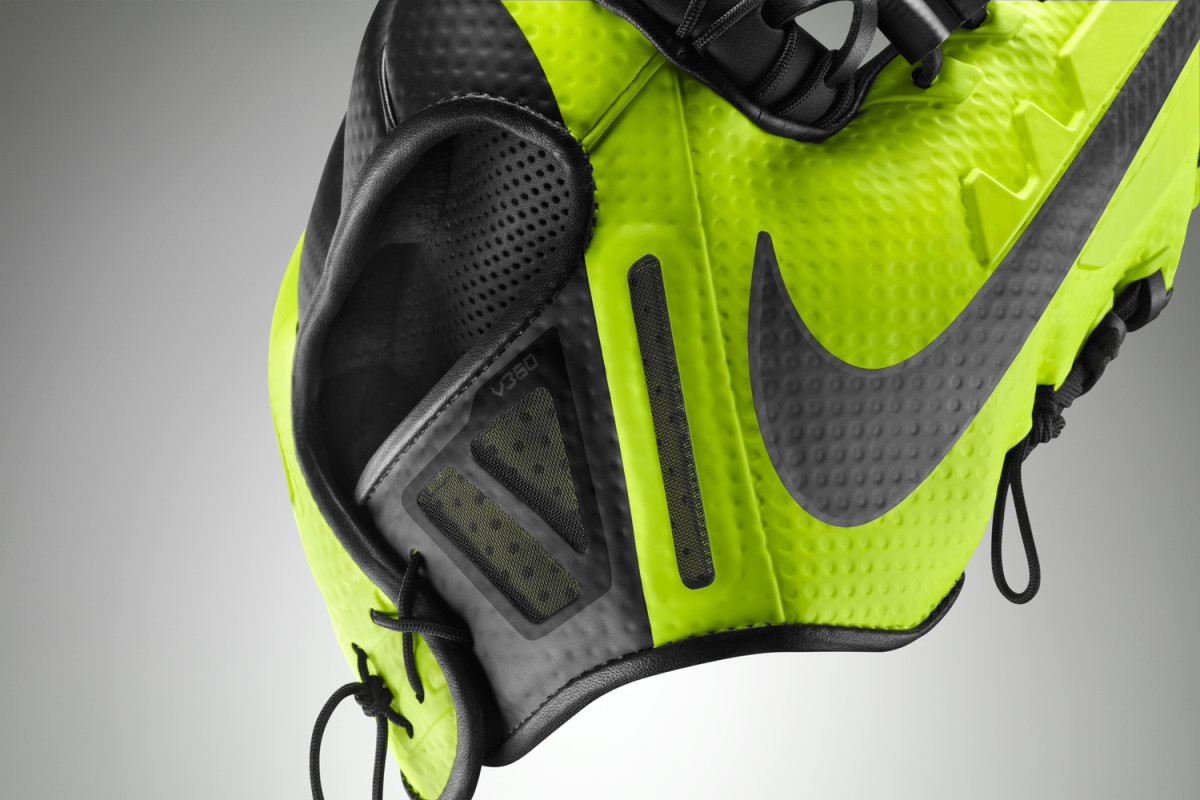
Introducing the Nike Vapor 360 (Photos courtesy of Nike)
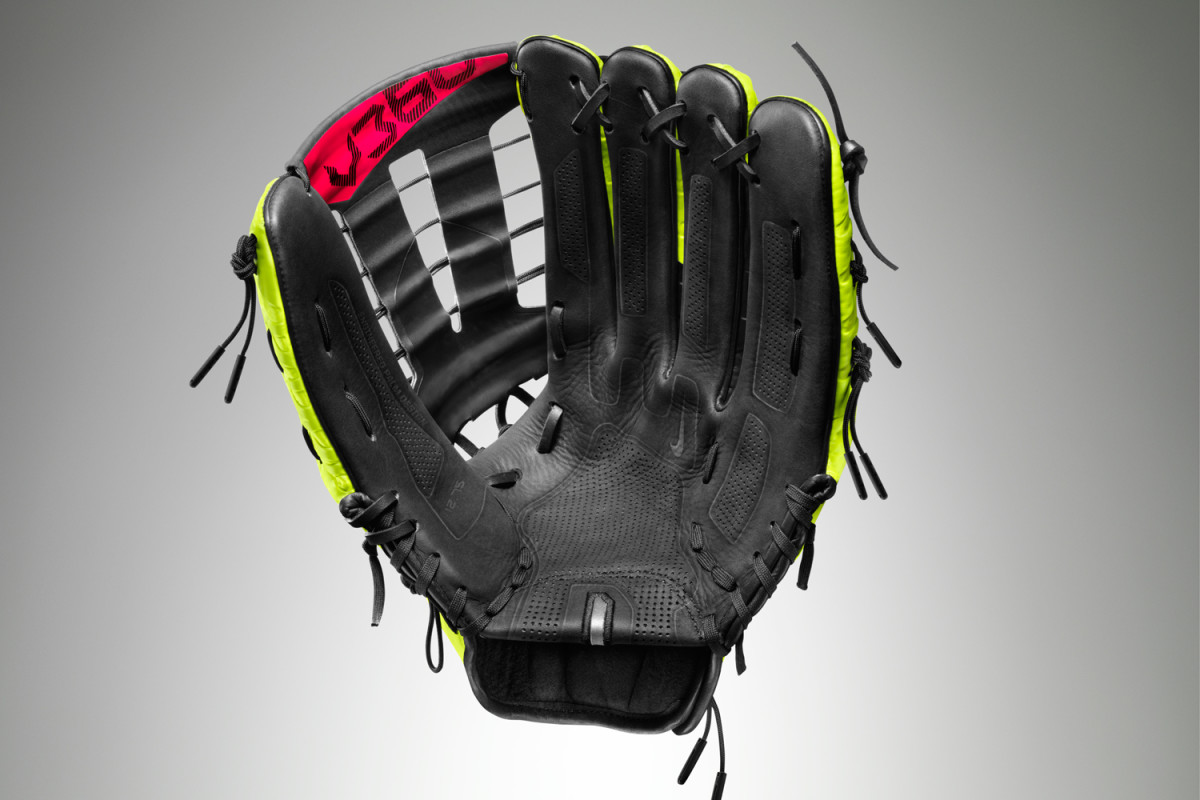
Introducing the Nike Vapor 360 (Photos courtesy of Nike)
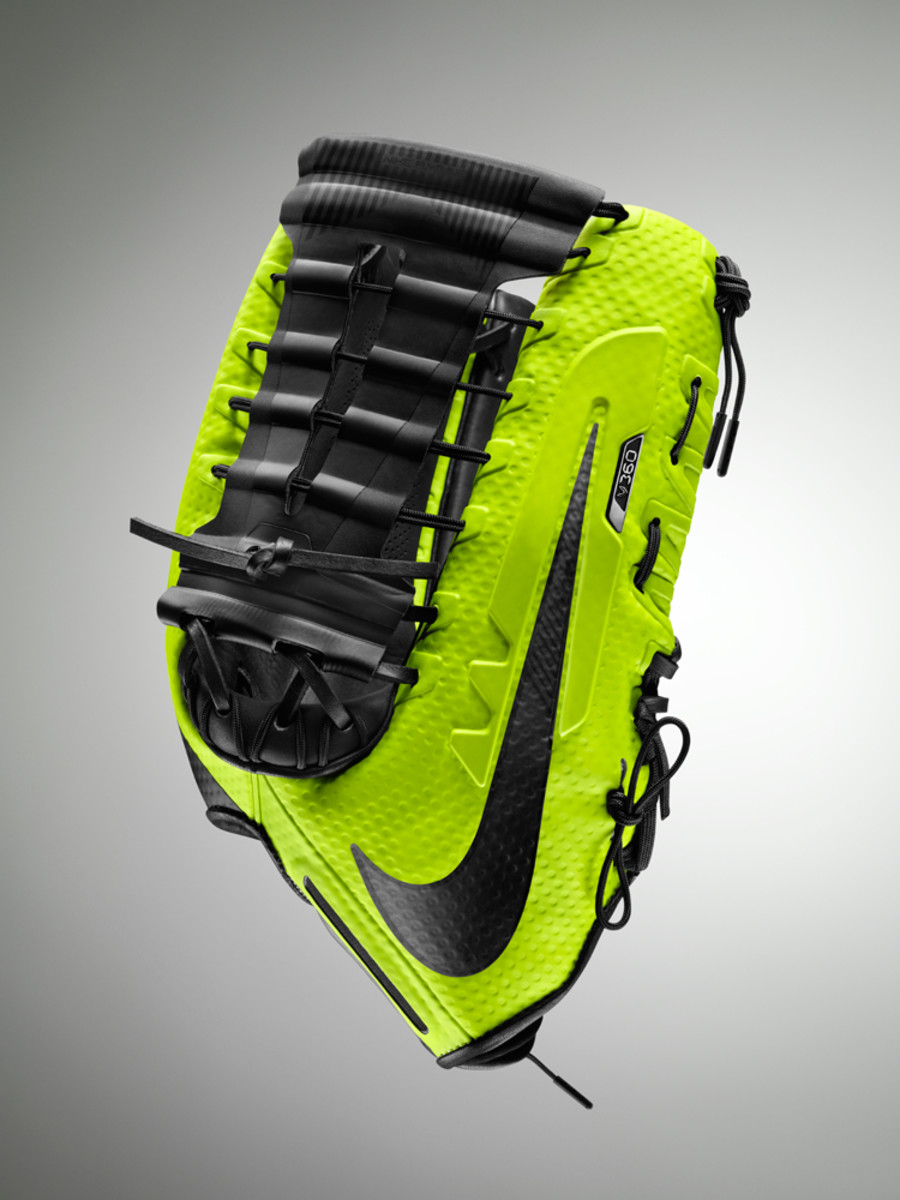
Introducing the Nike Vapor 360 (Photos courtesy of Nike)
